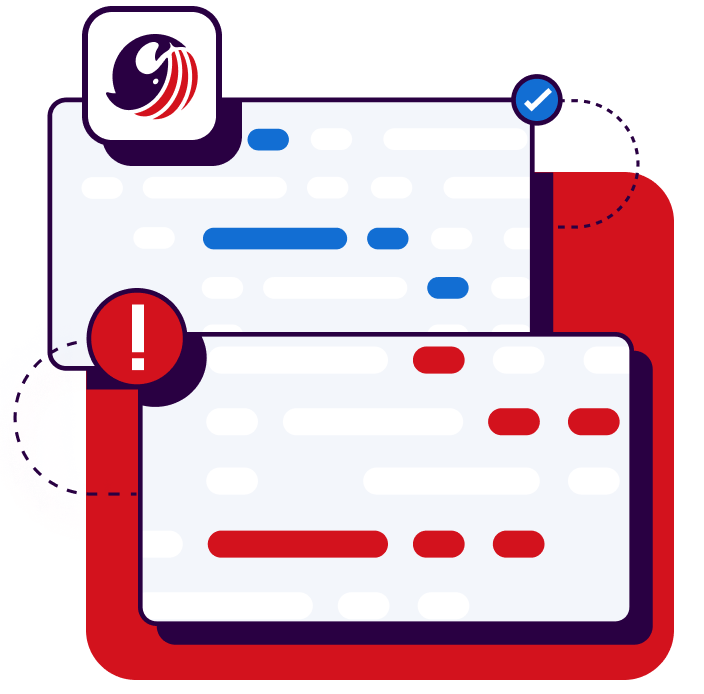What is code quality?
The term code quality describes the general evaluation of a piece of software code's effectiveness, reliability, and maintainability. The main qualities of code quality are readability, clarity, reliability, security, and modularity to name a few.
These qualities make the code easy to understand, change, operate, and debug.
Code quality also refers to how well the code adheres to a set of established coding standards or practices as well as how well it runs as intended.
Quality code also means that it is performant and efficient, ensuring that the software runs seamlessly and responds quickly.
When code adheres to the quality standards it can be easy to extend in order to accommodate new features and functionality.
Why code quality is important?
Code quality improves readability, maintainability, effectiveness, reliability, and reusability, which helps prevent and reduce issues such as code smells, bugs, security vulnerabilities, and the accumulation of code-level technical debt.
Maintainability
By focusing on high-quality code, developers are more easily able to read, understand, and modify the code.
The communication between team members is enhanced when the code is clear and adheres to uniform conventions.
Additionally, it improves maintainability, making it easier for developers to make adjustments, address faults, and add new features.
Reduce Bugs
Good quality code is more resistant to errors and bugs.
It adheres to coding standards and best practices, reducing the possibility of introducing logical flaws, syntax errors, or other problems.
Developers can avoid wasting time and energy on troubleshooting and debugging by decreasing bugs.
Efficient Performance
Code that is organized and optimized results in better program performance.
The software operates seamlessly and responds swiftly thanks to efficient algorithms, good memory management, and optimized resource utilization, improving user experience.
Likewise, high code quality reduces the possibility of performance bottlenecks and scalability problems as the product expands.
Software Reliability
Code quality significantly affects the robustness and dependability of software.
It appropriately manages exceptions and issues to keep the program reliable even under difficult situations.
Programmers can create software that is less susceptible to crashes, data loss or corruption, and vulnerabilities while ensuring good code quality.
Developers may produce high-performing, dependable, and maintainable software that satisfies user needs, lowers long-term technical debt, and promotes a good development experience by investing in code quality.
How to improve code quality
Throughout the software development lifecycle, developers can use a number of methods and techniques to enhance the quality of their code.
First and foremost, it's crucial to write readable, consistent code.
Adopting sound coding habits, leveraging the right tools, and adhering to set norms are all necessary steps in the continuous process of improving code quality.
Following coding conventions, using best practices, performing extensive testing, adopting code reviews, utilizing automated tools, integrating CI/CD pipelines, and cultivating a culture of continuous improvement is a couple of ways to help enhance code quality.
Testing
In-depth testing is also essential for enhancing code quality.
To verify the accuracy and functionality of the code, developers ought to employ unit tests, integration tests, and other automated testing approaches.
It is possible to use test-driven development (TDD), in which tests are written before the actual code.
This method makes sure the code complies with the requirements and assists in finding and fixing the problems early in the development process.
Code Reviews
Code reviews can be an effective way to improve code quality. Either peer or automated code review, allows the developer to assess the quality assurance of the codebase.
Peer code review, or manual code review, lets programmers give feedback, spot potential problems, and exchange expertise. Typically seen as a more collaborative process within the same team or organization.
An automated code review process compares the source code to a set standard of guidelines against known errors or vulnerabilities.
Static code analysis tools scan the codebase for possible issues like syntax errors, code smells, performance bottlenecks or security vulnerabilities, improving software quality while reducing technical debt.
These technologies can be incorporated into the development workflow to help developers spot and fix code quality problems early, which lowers the risk of writing inefficient or bug-ridden code.
Continuous integration and Continuous Delivery (CI/CD)
Continuous integration and continuous delivery pipelines can further improve code quality.
Developers can make sure that code changes are accurately verified and validated before being incorporated into the main codebase by automating the build, testing, and deployment steps.
The result is less of a chance to introduce regression or incompatible modifications and the process for delivering software is more robust and consistent.
Developers may write manageable, reliable, and effective code that satisfies strict quality requirements and improves the entire software development process by using these principles.
Sonar and Code Quality
To achieve quality code development teams need to implement the right development practices that include code guidelines, and the right checks at the right place and time which include static analysis that allows them to produce Clean Code.
Clean Code promotes collaboration among developers, reduces confusion, and enhances the overall readability and understandability of the code.
Sonar allows development teams to deliver code that meets the quality standard.
Using SonarQube for IDE, (IDE extension) for real-time feedback as your code allows developers to fix issues as the code is written.
SonarQube Server (self-managed) and SonarQube Cloud (SaaS) in the CI/CD pipeline perform static analysis and utilize Quality Gates to allow code that meets a certain quality standard to be released to production.
This enables consistency and alignment among development teams.
